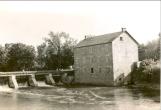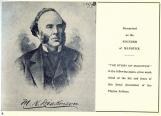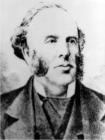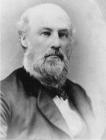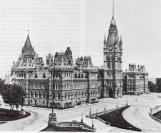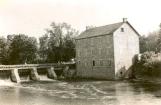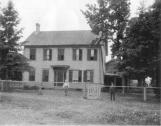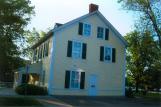6
Moss Kent Dickinson was known as the "King of the Rideau" & had many boats travelling on the Rideau.1870-1890
Rideau Canal, Ontario, Canada
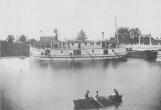
8
Dickinson's Development of a Town Site and the Founding of ManotickIn 1862, Dickinson developed a plan for his village, including a name. He chose Manotick, an Ojibway word meaning "Island in the River." The plans were completed in 1862 and registered with the County of Carleton.
The area around the dam in Manotick had very little settlement and the land was available. Dickinson decided to buy thirty acres. He chose to build a sawmill and a modern gristmill powered by turbines. His holdings were in a large circle around the mills on either side of the back channel. His home across the street from his gristmill served as the Moss Kent Dickinson's General Trading and Manufacturing Depot and Farmers Exchange, housing the main offices for his busy mills. The Carriage House next door to his home allowed farmers to tie their horses while visiting his milling enterprise.
The Mill, the River, and Dickinson Square
It was mainly soldiers who worked on the canal that populated nearby Long Island. It served as a centre for surrounding farmers and lock operators. Long Island had churches and a blacksmith shop but no industry. 1860 saw the construction of Dickinson's gristmill, bringing revenue into the town of Manotick. Long Island began to falter as Manotick surged ahead. Manotick was a busy bustling town with mills, shops and homes. The Beldon Atlas called it "the most flourishing and prosperous village in the County of Carleton." A post and telegraph office had been established in 1864 and by 1868 the town included a planing mill, a saw mill, a gristmill, a wool carding, dyeing and cloth dressing mill, and shingle machines. They were able to provide the counties of Russell and Carleton with dry goods, groceries, hardware and agricultural implements in exchange for produce, saw logs and cordwood. In 1861 the land had sold for $8.00 an acre. By 1880, the price was over $48.00 an acre.
By 1880 the town was well equipped with its own services and trades including one hundred residences, five general stores, one drug store, one school, three churches, five blacksmith shops, four wagon shops, a cabinet carpenter, a tailor, a photographic gallery, and shoe, tin, and harness shops. Its manufacturing establishments included a saw mill, a flour and grist mill, the internationally known Canada Bung, Plug and Spile Factory, and a carding and cloth factory to which were attached a wharf, storehouses, sheds, a storage cooper and carpenter shops. The town was self-sufficient and able to sustain itself on its own.
